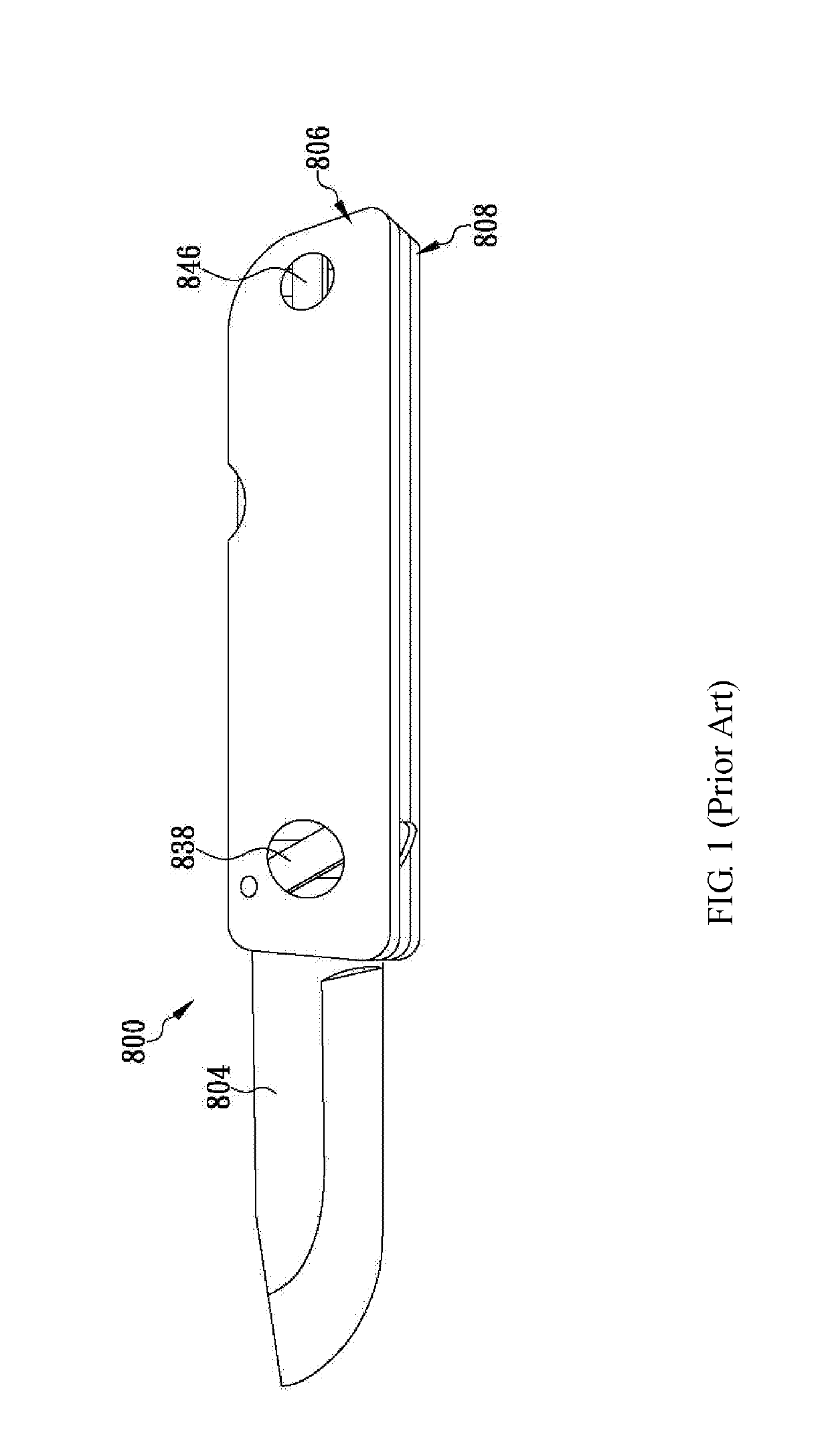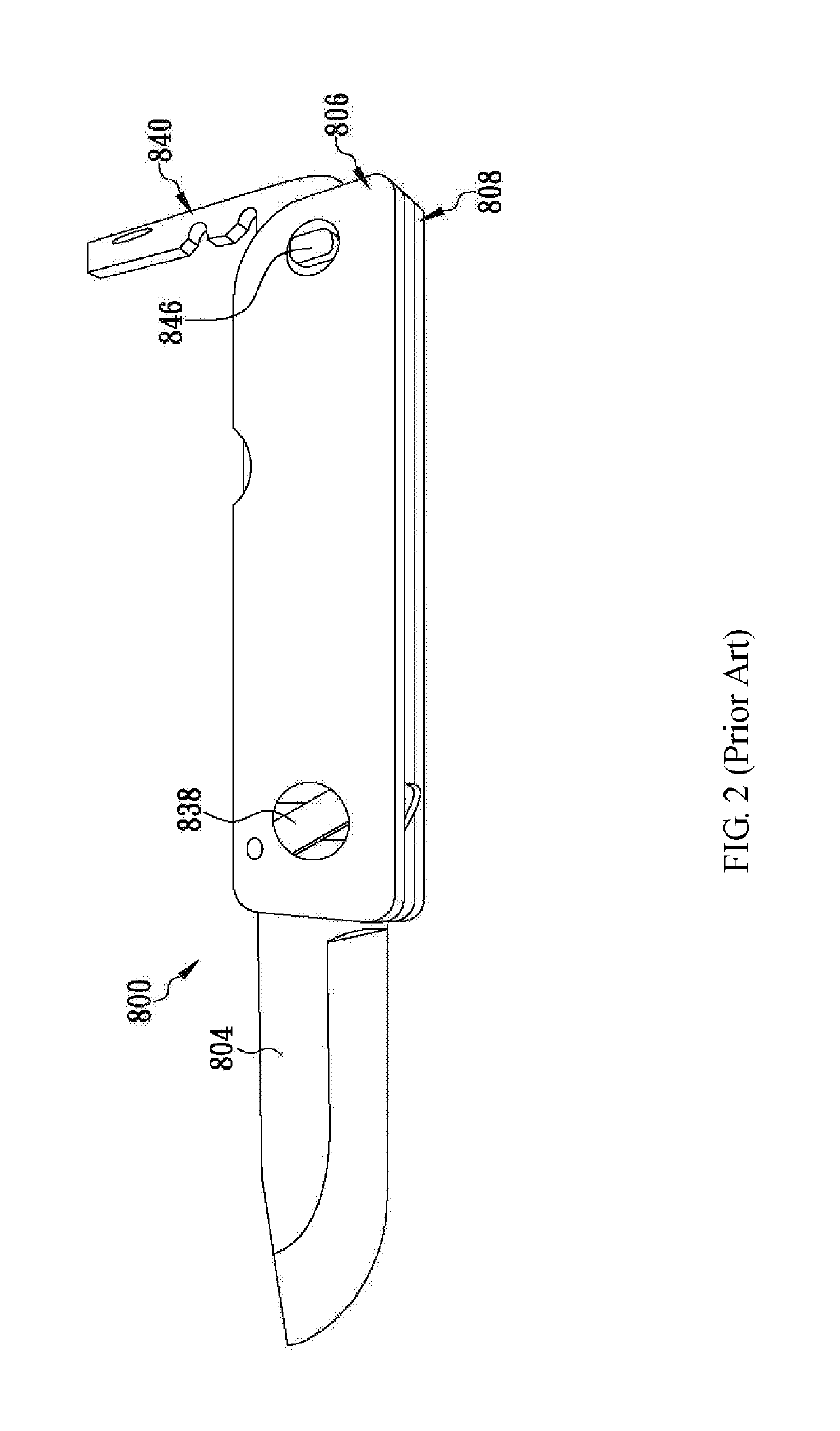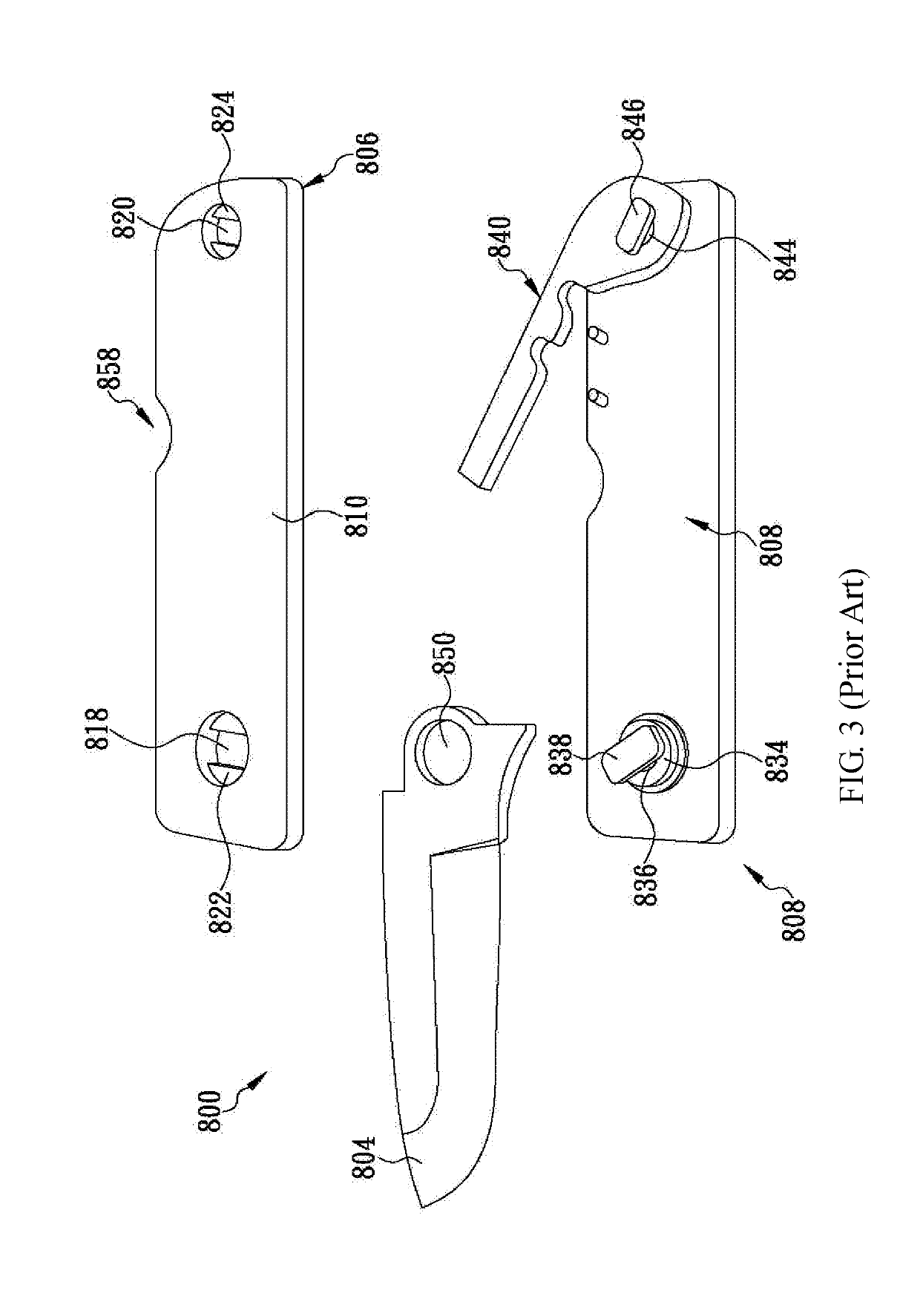However, a conventional folding knife that has been used for a long time tends to have a buildup of grime in the handle, in addition to a worn, and hence blunt, blade.
While this conventional manufacturing method can keep the handle and the blade of a conventional folding knife from separating from each other due to the improper intervention of an external force during use, the securely fastened handle structure adds to the difficulty of disassembly of the conventional folding knife; in other words, the conventional folding knife cannot be easily, safely, or rapidly taken apart for cleaning or maintenance.
(1) While disassembling or reassembling the folding knife 800, a user must sequentially and repeatedly adjust the upper handle portion 806, the lower handle portion 808, and the locking portion 840 to their respective required positions with precision while gripping each of the aforesaid components with one or the other hand. Not only does the adjustment complicate the disassembly and reassembly of the folding knife 800 and therefore cause trouble to the user, but also the user's fingers or palms may be
cut during the disassembly or reassembly process if the blade 804 is not gripped at an appropriate angle or by an appropriate portion.
(2) The blocks 838, 846 and the openings 818, 820 are not circular but have specific polygonal shapes. These structural features require precision
machining during manufacture and hence incur high
machining costs. In addition, one who tries to disassemble or reassemble the folding knife 800 must adjust the positions of the blocks 838, 846 and of the corresponding openings 818, 820 very carefully because the blocks 838, 846 cannot be inserted through the openings 818, 820 respectively unless the former are aligned with the latter. Undoubtedly, the time-consuming and difficult aligning process makes it difficult to disassemble and reassemble the folding knife 800.
(3) The thicknesses of the engaging blocks 822, 824 must be equal to or slightly smaller than the depths of the engaging grooves 836, 844 respectively in order for the engaging blocks 822, 824 to engage respectively with the engaging grooves 836, 844 and thereby bring about a locked state after the upper handle portion 806, the lower handle portion 808, and the locking portion 840 are rotated. It is consequently required that the manufacturing tolerances of the related components of the folding knife 800 be controlled within a very
small range; otherwise, either the folding knife 800 may have problem being assembled, or the components may get loose or make
noise after the folding knife 800 is forced into the assembled state, resulting in a high fraction defective corrigible only through precision
machining. Such machining, however, leads to high production cost and may thus hinder the popularization of the folding knife 800 and similar products that feature easy disassembly and reassembly.
(4) While the folding knife 800 is being disassembled or reassembled, friction and compression between the edges of the engaging blocks 822, 824 and the edges of the engaging grooves 836, 844 are inevitable. After long-term use, therefore, the edges of the engaging blocks 822, 824 or of the engaging grooves 836, 844 are bound to be damaged or deformed. Once the damage or deformation aggravates over time, engagement between the engaging blocks 822, 824 and the engaging grooves 836, 844 may become impossible, and in that case, the folding knife 800 can no longer be disassembled and reassembled as designed.
(5) The folding knife 800 is so configured that only after the blocks 838, 846 and the corresponding openings 818, 820 are adjusted precisely to the correct corresponding positions can the blocks 838, 846 be inserted with ease through the openings 818, 820 respectively. If the folding knife 800 is of a relatively small size, the blocks 838, 846 and the corresponding openings 818, 820 will be, too, making it more difficult to align the blocks 838, 846 with the openings 818, 820 respectively, and the difficulty of, and danger associated with, disassembling and reassembling the folding knife 800 will increase significantly as a result.
As stated above, the conventional folding knives do have a large number of problems and drawbacks to be overcome.
 Login to View More
Login to View More  Login to View More
Login to View More 


